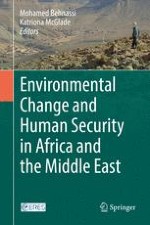2017 | OriginalPaper | Buchkapitel
7. Eco-Adaptation Strategies of Health to Climate Change: Case of Zoonotic Cutaneous Leishmaniasis(ZCL) as Vulnerability Indicatorin Pre-Saharan Region of Morocco
verfasst von : Kholoud Kahime, Lahouari Bounoua, Mohammed Messouli, Samia Boussaa, Ali Boumezzough
Erschienen in: Environmental Change and Human Security in Africa and the Middle East
Aktivieren Sie unsere intelligente Suche, um passende Fachinhalte oder Patente zu finden.
Wählen Sie Textabschnitte aus um mit Künstlicher Intelligenz passenden Patente zu finden. powered by
Markieren Sie Textabschnitte, um KI-gestützt weitere passende Inhalte zu finden. powered by
